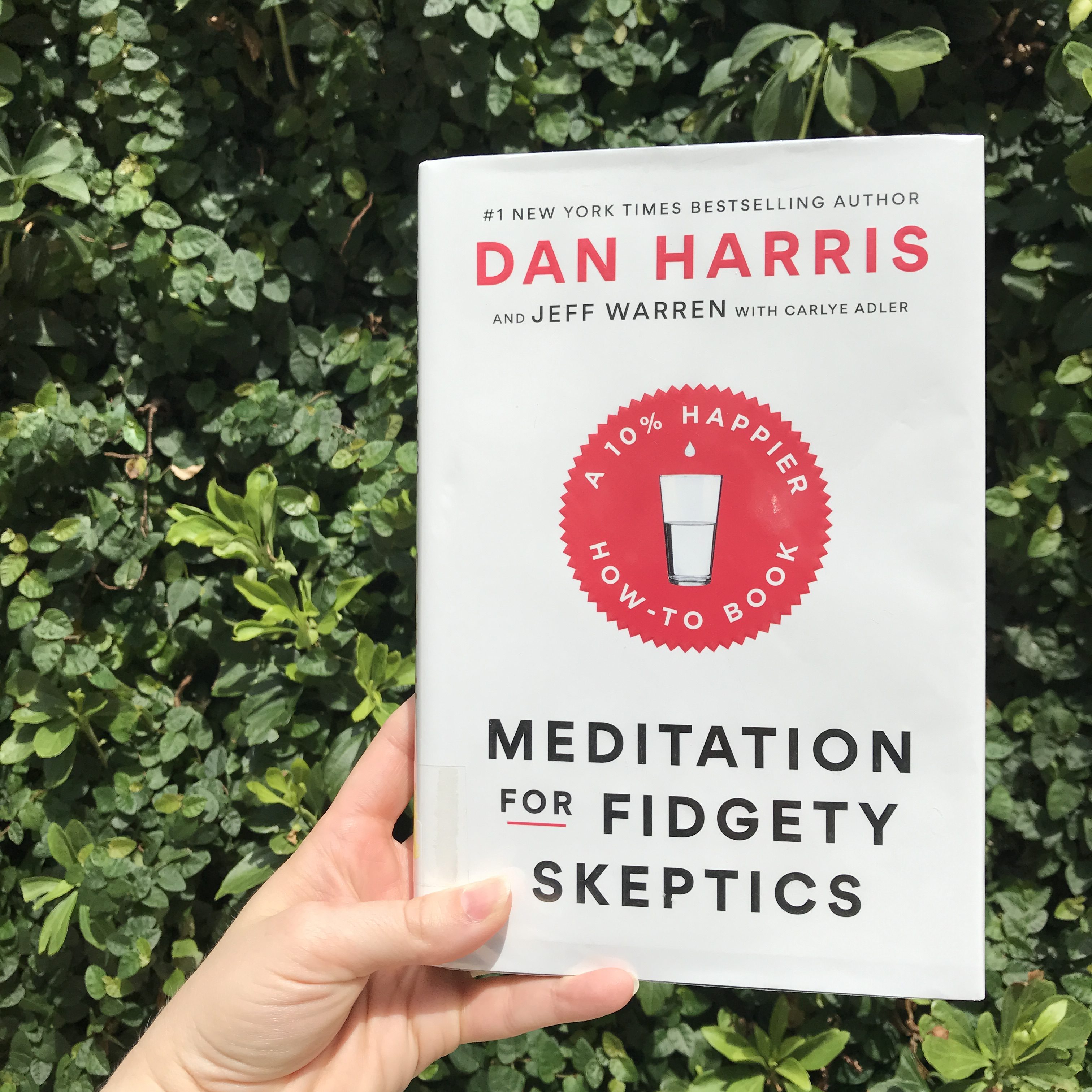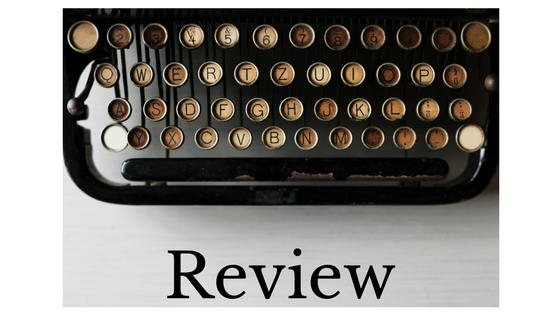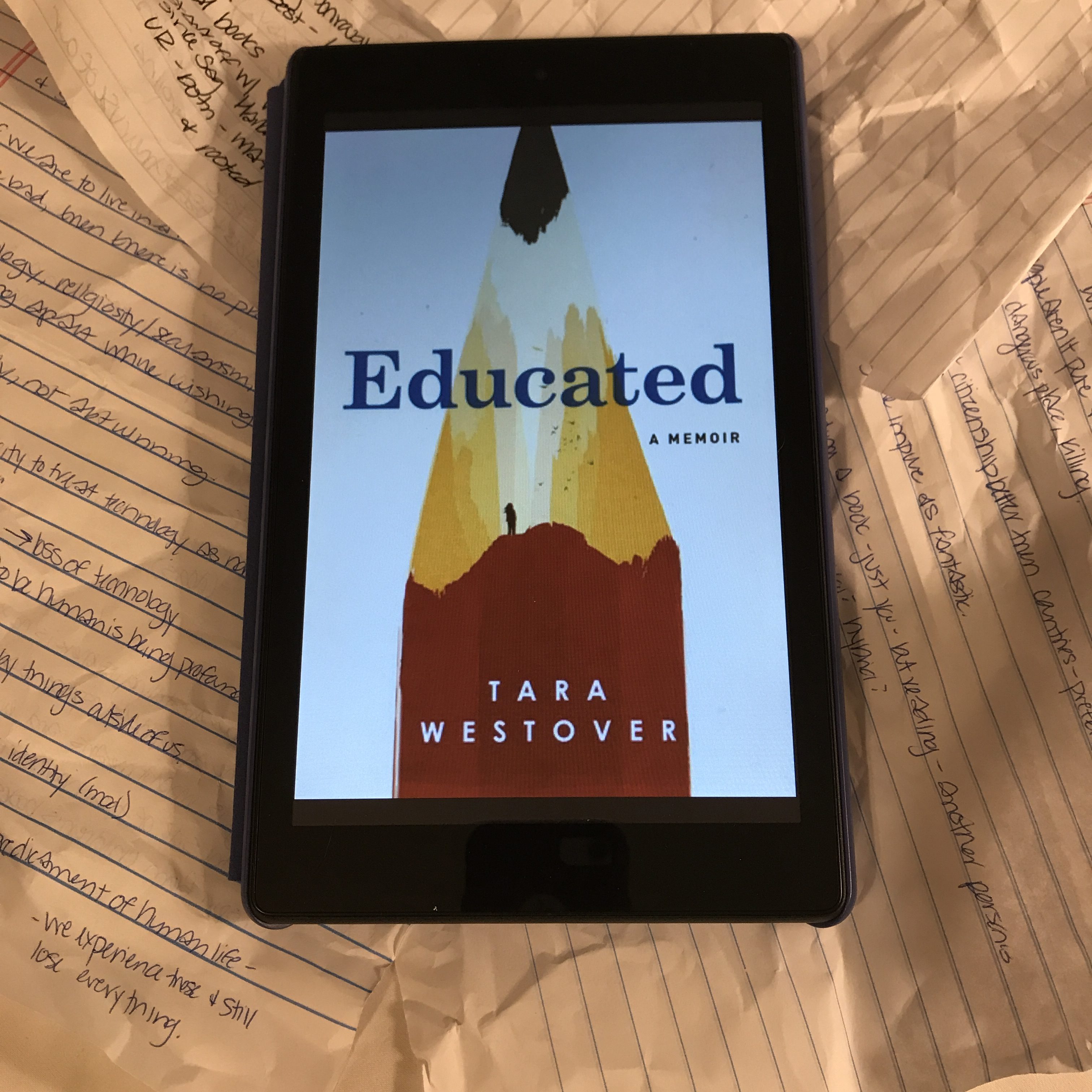I received a digital ARC of this book from Spiegel & Grau (part of Random House) on NetGalley. I’m grateful to Spiegel & Grau for their generosity and am happy to post this honest review. All opinions are my own.

Stumbling Upon Meditation
Admittedly, in February when I received this book, I wasn’t searching for a book on meditation—I was scrolling through available books on NetGalley and 10% Happier caught my eye. I was going to be starting yoga teacher training shortly and anything that might give me ideas for theming a class or making a mind-body connection sounded appealing. I was also at a point in my own yoga practice where meditation sounded like a next step—the power yoga I do a CorePower is constantly pushing me physically; meditation would be the mental push that came next.
Set Up and Structure
Strictly speaking, 10% Happier isn’t really a How-To Book on meditation, but rather, it’s an engaging mash-up of memoir of a meditation road-trip with nonfiction explanations of how to address common roadblocks to meditation and demystifying the practice. Interspersed within this narrative are meditation vignettes that, as the book progressed, were surprisingly well-matched for the text. For example, when addressing the common stumbling block of not having time to really sit and meditate, one of the ways Harris and Warren come at this is by introducing the idea of moving meditations—meditations on the sense and feel of every-day activities, bringing mindfulness to the feel of a toothbrush on gums or water hitting skin in the shower. There then appears a meditation vignette on exactly this practice. For those feeling like they just need rest, not something in their head, there are practices for restful meditation and self-compassion meditation.
As I read, admittedly I skimmed the vignettes. Most of the time while reading, I wasn’t in a place—physically or mentally—to stop, drop, and meditate when a vignette came up. I also don’t know that I understand how it’s possible to meditate while simultaneously reading something. For me the vignettes were less guides to meditate, than an introduction to how that particular practice or focus would work in a meditation so I was familiar when I came back to it.
Book + App
Harris and Warren realize that reading and meditating probably doesn’t go hand-in-hand for many people and the idea of memorizing the “rules” of a meditation ahead of time so I can do it “right” later probably isn’t the point. There’s a 10% Happier app where all of the guided meditations that appear in the book can be found—however, there is a cost here. This app then begs the question of why the book is necessary. If you’re sold on meditation and just want samples to guide you through meditations of different kinds and lengths, you can probably skip the book and go to the app. The app, it should be noted, does cost $100 a year ($8.33 a month) and comes with a seven-day free trial. The book is obviously significantly cheaper, but without the benefit of the guided audio. (Full Disclosure: I’m not at a place where I’m pulling that $100 trigger; however, there are legitimate studies that show that imposing a “cost” on something can make it more likely that we use it—we’ve invested $100 into the practice and so we’re more likely to practice than if it were totally free. So, I’m not buying it today, but I’m not ruling it out.)
Heavy on the Normal, Light on the Woo-Woo
If, like me, you think meditation sounds like a good thing you should try tomorrow (and tomorrow and tomorrow), this is a book you may want to pick up. I appreciated the background and the “why” of each of the meditation options. 10% Happier isn’t just about selling you the benefits of meditation (several time Harris insists this is not the purpose of the book, though of course they come up) but rather about bringing meditation down to something that seems less hard and never-achievable, and more like something anyone can do at any time. Harris and Warren, while being a little woo-woo (particularly Warren, not really Harris), made meditation seem like a totally normal thing that, well, normal people do.
Indeed, Harris has rather interesting “cred” for an author of a book on meditation. As he makes clear on literally the first page, he once suffered a debilitating panic attack live on ABC’s Good Morning America during a time period when he was engaging in some “recreational” stimulating activities…namely cocaine and E to combat an undiagnosed mild depression. (Apparently this video is relatively easy to find on YouTube but I refrained because it seemed cruel to add to the view counts and, well, I actually have no desire to watch someone have a mental health emergency that people consider “entertainment.”) Meditation is how he restores his equilibrium now—both a cheaper and healthier practice than his previous recreational activities. (It is important to note that Harris also takes a respectful stance towards the benefits of meditation for mental health. He makes it clear that meditation can help depression and anxiety but never presents it as a cure for either—a line I think is critical to maintain.)
Harris is also a terrible poster-child for holier-than-thou, which normalized the practice. One of the takeaways of this book is that if Harris—a news anchor with a high stress job, perfectionist tendencies, and some anger issues—can keep meditating, then I certainly can. Throughout the text, Harris and Warren (who has diagnosed ADD) both talk about where they still have room to grow in their practices, where they still “mess up” or get stuck. 10% Happier isn’t a book about people who’ve already arrived, but rather a book of people somewhere in the middle of their journeys, turning around to offer a hand to the people just starting.
Recommended
If you’ve been vaguely interested in meditation but not sure where to start or if it can possibly fit into your lifestyle, 10% Happier is definitely a book worth picking up. The value in it for me was less the meditations (though I will come back to them), but rather the explanations of what meditation looks like in the real world and how accessible it truly is for different people with different capacities at different times. Right now, my boss is taking her first vacation where she is unreachable in about twenty years (not exaggerating). I’m stepping up to fill her shoes and it’s already feeling overwhelming after two days. I do not have the capacity to add a twenty-minute practice to my day because to do so would be sacrificing time when others need me at work, when my partner needs the 45 minutes of attention I can afford to give him right now, or the sleep I desperately need to keep this going for three weeks until my boss is back. And yet, Harris and Warren have a meditation for that. At a time when I think I can “afford” it least from my time, yet need it most, 10% Happier has introduced me to ways that this practice can work for me.
Notes
Published: December 26, 2017 by Spiegel & Grau (part of @RandomHouse)
Author: Dan Harris & Jeff Warren
Date read: July 7, 218
Rating: 3 ¾ stars




 When someone is your husband or father, that’s simply who they are. You don’t stop to question too much about them unless you’re given reason to, and they’d never been given reason to.
When someone is your husband or father, that’s simply who they are. You don’t stop to question too much about them unless you’re given reason to, and they’d never been given reason to. The boy’s eyes flew open.
The boy’s eyes flew open. On audio, however, this format works significantly less well. The citations for the historical sources break up the flow of the audio so frequently but so quickly that they become confusing. After the first cite, the citation for an historical source simple becomes “Author, op. cit.” In the written book (as you can see to the right), it’s fine. The eye can skim past with little interruption. In the audio, a different voice reads the citations so that seemingly out of nowhere the voice of what sounds like a preternaturally calm flight attendant interrupts the story to say “Leech, op. cit” and before you can wrap you head around what she just said, the next reader is talking and reading the next quote. The voice is jarring enough that it can’t easily be ignored and, as a result, I’m sure I missed much of the first several chapters of the book.
On audio, however, this format works significantly less well. The citations for the historical sources break up the flow of the audio so frequently but so quickly that they become confusing. After the first cite, the citation for an historical source simple becomes “Author, op. cit.” In the written book (as you can see to the right), it’s fine. The eye can skim past with little interruption. In the audio, a different voice reads the citations so that seemingly out of nowhere the voice of what sounds like a preternaturally calm flight attendant interrupts the story to say “Leech, op. cit” and before you can wrap you head around what she just said, the next reader is talking and reading the next quote. The voice is jarring enough that it can’t easily be ignored and, as a result, I’m sure I missed much of the first several chapters of the book.